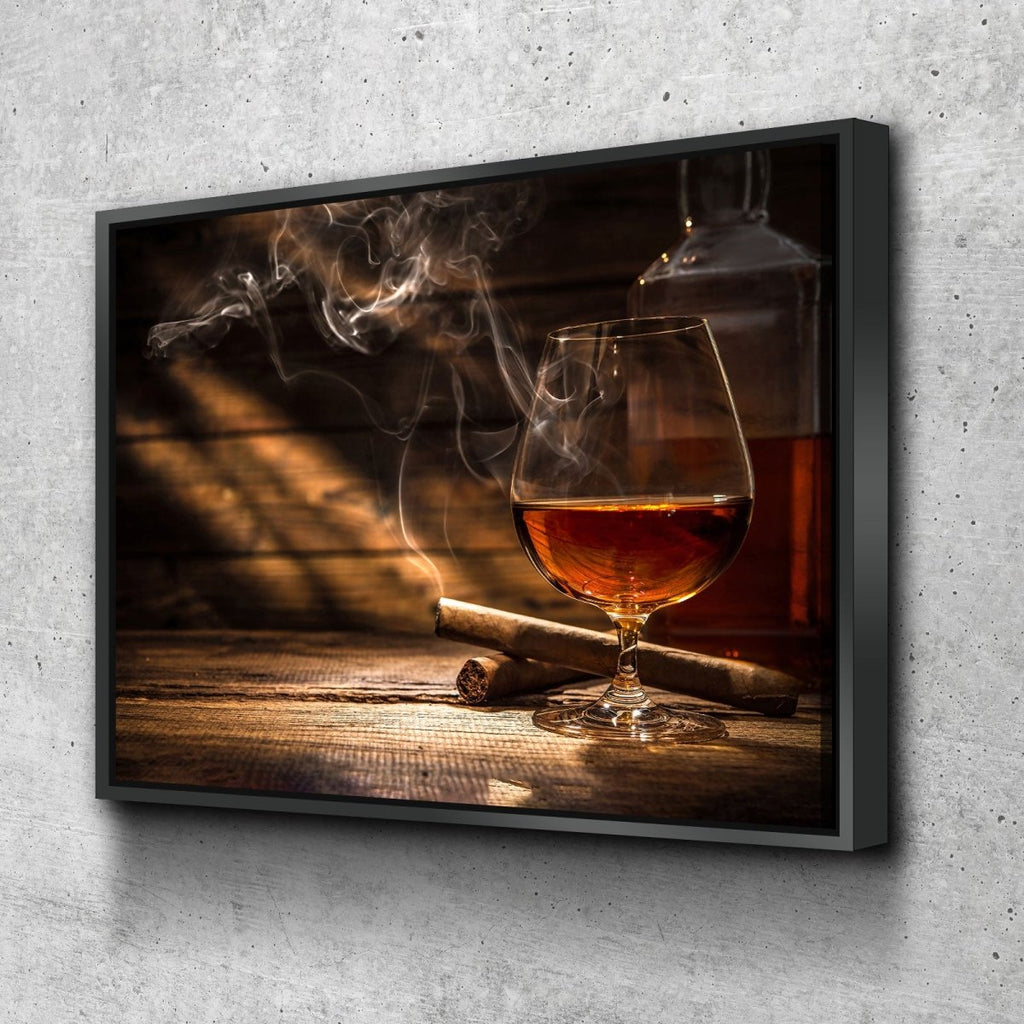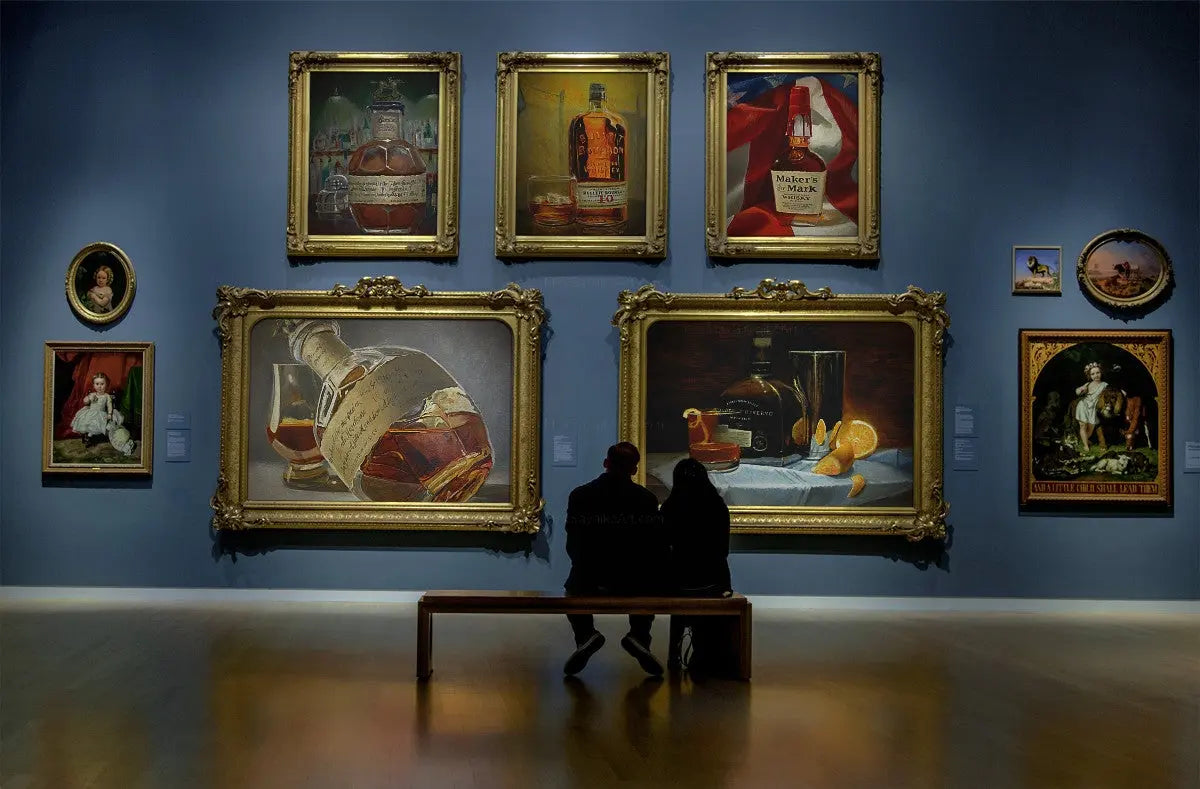Limited Edition Bourbon Art: Why Collectors Are Crowding to One-of-a-kind Finds
The Importance of Whiskey Art in Celebrating Heritage and Craftsmanship in the Beverage Sector
The complex connection between scotch art and the event of heritage and craftsmanship within the beverage sector can not be overemphasized. With attentively developed containers and tags, scotch brands encapsulate their historical roots and the artisanal skills that define their manufacturing approaches. This imaginative dimension not only boosts market allure yet likewise acts as an avenue for cultural storytelling, promoting a deeper connection in between the consumer and the craft. As we discover the numerous elements of this subject, interesting concerns concerning the influence of modern trends on typical methods emerge, motivating more examination.
The Historic Origins of Whiskey
At the heart of bourbon's appeal exists a rich tapestry of historical roots that map back to ancient people. The origins of bourbon can be connected to the distillation methods of the Sumerians and Babylonians around 2000 BCE, where early types of fermented grain drinks began to emerge. It was in the Middle Ages that the art of distillation progressed significantly, specifically in Ireland and Scotland, leading to the production of scotch as we understand it today.
The term "whiskey" itself originates from the Gaelic word "uisce beatha," suggesting "water of life." This phrase highlights the social value of bourbon in Celtic societies, where it was commonly associated with rituals, celebrations, and common bonding. By the 15th century, purification became an identified craft within monastic communities, leading the way for the establishment of legal distilleries.
As trade courses expanded, whiskey's popularity grew, transcending regional borders and recording the rate of interest of aficionados worldwide. Realism Art. This historic journey mirrors not just the workmanship behind scotch manufacturing however also its indispensable role in social and cultural contexts, marking it as a considerable drink throughout background
Artistic Expression in Branding
Bourbon branding stands as an engaging intersection of creativity and business, where visual identification plays a vital role in shaping customer understanding. The aesthetic appeals of whiskey labels, packaging, and advertising products reflect not only the brand name's story yet likewise its core worths and heritage. Through artistic expression, distilleries convey a narrative that reverberates with customers, evoking feelings and triggering connections.
Using color, typography, and imagery in branding offers to distinguish items in a saturated market. For instance, standard themes might stimulate a sense of credibility and craftsmanship, while modern layouts can indicate innovation and forward-thinking. This tactical artistic direction enhances brand name recognition and commitment, permitting consumers to forge an individual relationship with the whiskey they choose.
Moreover, artistic expression in branding typically acts as a party of local heritage. Distilleries regularly include local symbols or historical references into their designs, creating a local color that invites consumers to take part in a broader cultural experience. Inevitably, the artistry behind scotch branding not only enhances aesthetic appeal but additionally enriches the overall story of the brand name, fostering a deeper recognition for the workmanship and heritage embedded in each bottle.
Workmanship in Container Layout
The artistry noticeable in scotch branding expands beyond aesthetic identification to incorporate the workmanship associated with bottle layout. Each container works as a vessel not simply for the spirit within, yet additionally for the tale it tells about its practice, top quality, and beginning. The layout procedure needs meticulous attention to detail, as aspects such as closure, form, and product add considerably to the general assumption of the scotch.
Workmanship in container style entails selecting premium glass that can improve the bourbon's color and quality, while likewise providing a responsive experience for the customer. The shape of the bottle have to be both cosmetically appealing and functional, commonly reflecting the heritage of the brand. Several distilleries choose for distinct forms or embossed logo designs that stimulate a sense of authenticity and history.
In addition, the label design and typography play a crucial role in communicating the brand name's story. Realism Art. A well-crafted container not only captivates the consumer's eye however likewise enhances the brand's dedication to quality and practice. In this method, the workmanship of bottle style comes to be an essential facet of the scotch experience, combining virtuosity with an extensive regard for heritage
Cultural Relevance of Whiskey Art
Commemorating tradition and craftsmanship, the cultural significance of scotch art transcends plain aesthetic appeals, intertwining with the historical and social narratives of the regions where it comes from. Each container offers as a canvas, illustrating the special tales, folklore, and practices that have formed regional whiskey-making methods. The complex designs typically mirror the heritage of the distillers, integrating symbols and themes that resonate with the culture and values of their areas.

Furthermore, whiskey art plays an essential duty in communal events and parties, serving as a substantial web link in between people and their shared experiences. By valuing the artistry why not try these out in bourbon packaging, consumers cultivate a deeper understanding and respect for the craft, inevitably enhancing their pleasure of the drink itself.
Modern Trends in Scotch Presentation
In current years, the presentation of bourbon has actually developed to mirror modern preferences and patterns while still recognizing typical craftsmanship - Realism Art. Distilleries are increasingly concentrating on aesthetic elements that improve the overall drinking experience, connecting the void between heritage and modernity
Innovative container designs have actually emerged, usually including sustainable materials and imaginative labels that tell engaging tales. Lots of brand names now work together with regional artists, instilling their products with distinct aesthetic expressions that resonate with consumers. Additionally, limited-edition launches are frequently packaged in collectible containers, adding value and charm for connoisseurs.

Final Thought
In conclusion, scotch art works as an important conduit for sharing the heritage and craftsmanship fundamental in the beverage sector. Via detailed branding, innovative have a peek at these guys container layouts, and culturally considerable imaginative components, bourbon brand names successfully recognize their customs and link with consumers. This creative narrative not only elevates the appreciation of bourbon however additionally strengthens neighborhood identity and pride among producers. Eventually, whiskey art plays a necessary function in preserving and celebrating the abundant cultural tapestry of whiskey-making.


Workmanship in bottle layout entails choosing high-grade glass that can boost the bourbon's shade and clearness, while likewise providing a tactile experience for the consumer. In this method, the craftsmanship of container design becomes an essential aspect of the scotch experience, merging artistry with an extensive regard for heritage.
In final thought, whiskey art offers Visit Your URL as a vital avenue for sharing the heritage and craftsmanship fundamental in the drink industry.